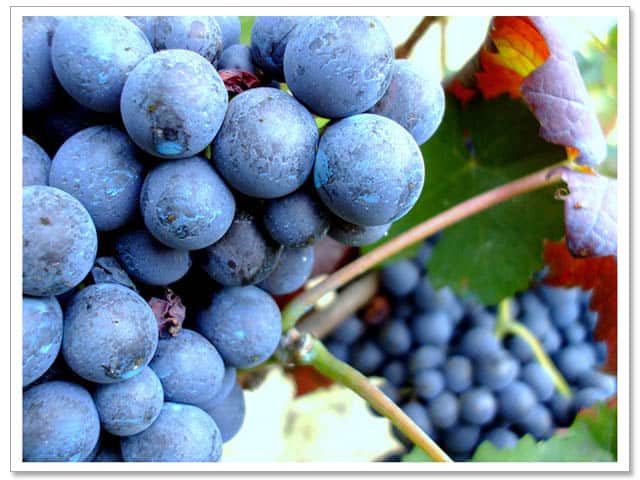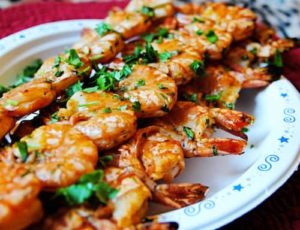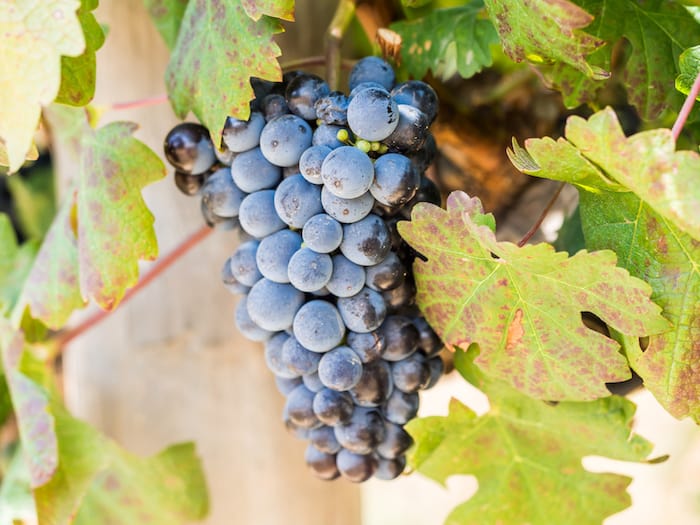Pinotage is a bit of an anomaly in that it’s a grape variety that is ‘somewhat’ native to South Africa — thanks to France. Yes, I know that doesn’t make sense. Early on in my wine education I related it to the Brits sending all of their prisoners to Australia and accidentally creating a country.
In reality, Pinotage is a cross between Pinot Noir (Red Burgundy) and Cinsault, a Southern French grape that itself is known as Hermitage in South Africa.

The Story of How “Pinotage” Came To Be
It’s said that the first Professor of Viticulture at Stellenbosch University — Abraham Izak Perold — created the Pinot Noir / Cinsault cross in an effort to bring the taste of Burgundy to South Africa. He planted four grape seeds in 1925, which were later forgotten about after he left the university.
Sometime after, a young lecturer by the name of Charlie Niehaus stumbled onto the garden at Stellenbosch near where Perold used to live. The property was overgrown at this point, and scheduled for revitalization. Niehaus rescued the plants and brought them to Elsenburg Agricultural College. It was there that professor CJ Theron had them replanted and later showed Perold his well-adapted creation. They called the cross Pinotage, and by 1941 the signature grape of South Africa was being transformed into fermented grape juice.
That’s the short of it, and I hope with every liver cell in my body that the story’s true, because it’s probably the only grape story that really interests me.
So Why Pinot Noir?
Why Cinsault? Couldn’t Perold have used any of Italy’s 3000+ grape varieties? I didn’t know Perold personally (surprise), but he must have had an affinity for Burgundian wine.
The finest Red Burgundy is fantastic. Unfortunately, the Pinot Noir grape variety is notoriously difficult to grow. Cinsault, on the other hand, is a grower’s dream. Mass-produced Cinsault tends to get a bit of the ‘stinkeye’ these days because it’s often used as a filler grape. This variety is extremely high-yielding, drought and disease resistant.
That may sound like a good thing, (hey, more wine right?), but these extreme yields lessen the concentration and aromatic quality of the grape. Big yields in wet climates can lead to rot, so the Stellenbosch region of South Africa makes for an ideal dry climate to grow Cinsault. If the Vintner were able to control his or her Cinsault yield… the result could be incredibly rewarding.
So, in my opinion, it wasn’t that Perold wanted to create great tasting Pinot Noir on a grand scale. I like to think that he wanted to offer wine enthusiasts the best of both worlds with moderate yields. Perhaps, from the beginning, he dreamed of creating South Africa’s very own grape variety.
Fun Fact: There’s a small but ambitious market for Sparkling Red Pinotage in South Africa
Even though Pinotage was first vinted in the 1940s, winemakers wouldn’t master the art of consistency for decades. When apartheid hit in the 60s, it would be 30 years before boycotts were lifted that would allow new technological advances and winemaking knowledge to reach South Africa.
Finally, we’re getting more consistent flavors and aromas. Though body style can vary depending on how the wine is crafted, particularly in how long and within what it is aged. Just within the last 10 years has Pinotage truly begun to show off its true potential. There’s even recent evidence that aging Pinotage can give way to lighter, more Pinot Noir-esque characteristics.
Pinotage Tasting Notes, Look, Feel & Aromatic Qualities
Despite one of Pinotages’ parents being Pinot Noir, you probably wouldn’t be able to detect its origins if you’re a new wine taster. It’s reminiscent of Shiraz with bold dark fruit and firm tannins on the open. In addition, some critics pin a signature rustic aroma to it or even the scent of fresh paint. Personally, I enjoy the smell of fresh paint (and gasoline for that matter), but I haven’t picked it up in premium quality Pinotage.
If the vintner fails to limit water intake during the growing season or utilize low-temperature fermentation techniques, volatile acidity can become a real issue in the final product.
In the glass, Pinotage exhibits a look that’s reminiscent of a lighter-bodied Malbec and Shiraz. Deep magenta hues around the rim of the glass compliment a cassis and deep violet core.
Fun Fact: Deep color means more polyphenolic compounds which means more antioxidants and healthy nutriment for your body. New research is even offering up evidence that they can reverse and or prevent certain types of cancers or heart-related diseases. As if you needed another reason to drink Pinotage.
What Does Pinotage Taste Like?
Common Flavors and Aromas
- Fruit: Red (Primary), Blue and Black – Ripe Cherry, Strawberry, Blackberry, Cassis, Red Currant, Plum
- Earth & Mineral Descriptors: Dry Earth, Rust, Gravel
- Additional Complexities: Old Red Barn and Horseshoe, Banana, Cracked Red Pepper, Light-Moderate Oak, Smoke, Tar, Spicy Teriyaki, Decades-Old Spice Box, Fresh Paint, Coffee
*Side Note… these Pinotage tasting notes are derived from both common and best quality versions of the wine. As always, I like to stress that wine tasting is a subjective practice, so consider these guidelines and describe what you know.*
Structure
- Body: Light-Medium-Full
- Sugar: Dry
- Tannins: High
- Acid: Low
- Alcohol: Medium-Plus
- Finish: Sour-Sweet, Medium
Terroir
- Soil: Varied
- Climate: Hot / Dry
- Notable Regions: South Africa | Brazil | New Zealand | California, USA

Pinotage Food Pairing Ideas and Recipes
Yes… my favorite part. Food and wine. As you may have noticed from the above tasting notes, Pinotage encompasses a diverse, but seemingly categorical flavoric lineup. This translates over to your ideal food pairings. Think Strawberries, think astringency, think spice. Ignore the body. That varies depending on what you’re buying. This is really a flavor pairing.
Related – Celebrate Pinotage: If you want to help bolster a grape’s reputation, drink a bottle of Pinotage and share it with the world on the second Saturday of every October — designated International Pinotage Day.
- These Tenderloin Medallions with Strawberry Marmelade will be a slam.
- Want to pair Pinotage with an appetizer? There’s no better option than Balsamic Habanero Drizzle on Tempura Sushi.
- If you’re in the mood for a burger, try out this Spicy Blackbean, Cilantro and Corn Hamburger Recipe.
- Smoked Wahoo
- Smoked Brisket
- Aged Cheddar
- Beef Jerky
- Indian Spiced Rice, Beef, Chicken Tikka
- Lastly… go to Chipotle, load the burrito into the crisper. Add brown rice, black beans, carnitas and steak (half and half), sour cream, cheese, pico, and medium salsa. Guac is optional and ideal, but you’ll probably get screwed on your money’s worth and even if that weren’t the case, adding Guacamole to the above burrito unit will surely break the seal. Let us know what you decide.
Additional sources include Pinotage.co.za, Cape Town Magazine.

